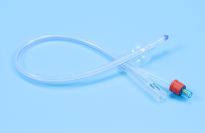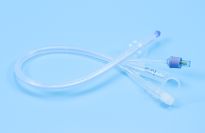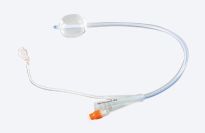Views: 0 Author: Site Editor Publish Time: 2023-02-22 Origin: Site








The Foley Catheter is a flexible, sterile tube inserted into the bladder to drain urine. It’s held inside your bladder by a balloon filled with water. It is also called an indwelling urinary catheter. Most foley catheters are made of latex or silicone.
What Are the Types of Foley Catheters?
What Is a Foley Catheter Use for?
What Is the Difference Between Indwelling and Intermittent Catheters?
What are the Different Foley Catheter Sizes?
How is a Foley Catheter Put in Place?
What are the Risks of a Foley catheter?
The Foley Catheter is a thin, sterile tube inserted into the bladder to drain urine. A balloon at the end of the catheter is inflated with sterile water to prevent the tube from sliding out of the body. The balloon can then deflate when the catheter needs to be removed. Because it can be left in place in the bladder for a period of time, it is also called an indwelling catheter. Most foley catheters are made of coated natural latex or silicone.
Picture 1: Latex Foley Catheters Picture2: Silicone Foley Catheters
Foley indwelling catheters are usually categorized into two-way Foley catheters, three-way Foley catheters, and Foley catheters with a temperature sensor.
Foley Catheter Types Brief Description:

A Two-way Foley Catheter has two separated lumens. One lumen is for drain urine, and the other is for balloon inflation and deflation.

A Three-way Foley Catheter has three lumens. One lumen is for draining urine, while the other is for balloon inflation and deflation. The third lumens allow for continuous bladder irrigation that helps in removing debris and blood clots.

Foley Catheter with Temperature Sensor is equipped with a thermistor sensing the core body temperature in the bladder. The third lumens allow for continuous bladder irrigation that helps in removing debris and blood clots.
Some of the disorders, problems, or procedures that might require the use of a urinary catheter include the:
• Urinary incontinence.
• Urinary retention.
• Surgery on the prostate or genitals.
• Other medical conditions such as spinal cord injury or dementia.
Intermittent catheters - also called Nelaton catheters are used for the short-term drainage of urine. Unlike the Foley catheter, the Nelaton catheter has no balloon on its tip and thus cannot stay in situ unaided.
Indwelling catheters - also called Foley catheters. A balloon at the end of the catheter is inflated with sterile water to prevent the tube from sliding out of the body. The balloon can then deflate when the catheter needs to be removed. Because it can be left in place in the bladder for some time, it is also called an indwelling catheter.
Foley catheters are sized according to their outside diameter using the French scale. In general, urinary catheters range in size from 6Fr to 26Fr in diameter.
• The average catheter size used by adult men is between 14Fr to 16Fr.
• The average catheter size used by adult women ranges from 10Fr to 12Fr.
• The average catheter size used by children (pediatric) ranges between 6Fr and 10Fr.
1. Before inserting the catheter, it is important to have all supplies and areas for the insertion ready.
2. The area around the urinary opening is cleansed.
3. The tip of the catheter is lubricated and inserted. Take deep breaths and try to relax.
4. The tip of the catheter, which is inside the bladder, has a small balloon at the end so the catheter won’t fall out.
5. The catheter is then connected to the drainage bag.
Follow the directions closely. The Foley catheter balloon MUST be deflated before removing it. Not doing this can result in an emergency situation.
1. Put the syringe into the balloon port on the catheter.
2. Gently pull back on the syringe to remove the water that was in the balloon.
3. Once the balloon is emptied, gently pull out the catheter.
Urinary Tract Infections (UTIs) caused by using a catheter are one of the most common types of infection. This risk is particularly high if your catheter is left in place continuously (an indwelling catheter).
Contact your doctor if you have signs or symptoms of a Urinary Tract Infection.
Disclaimer: All content found on our website, including images, videos, infographics, and text was created solely for informational purposes only and does not take the place of medical guidance provided by your physician. No information on this site is intended to be a substitute for professional medical advice, diagnosis, or treatment. We urge all our customers to always consult a physician or a certified medical professional before trying or using a new medical product.